Crocodiles
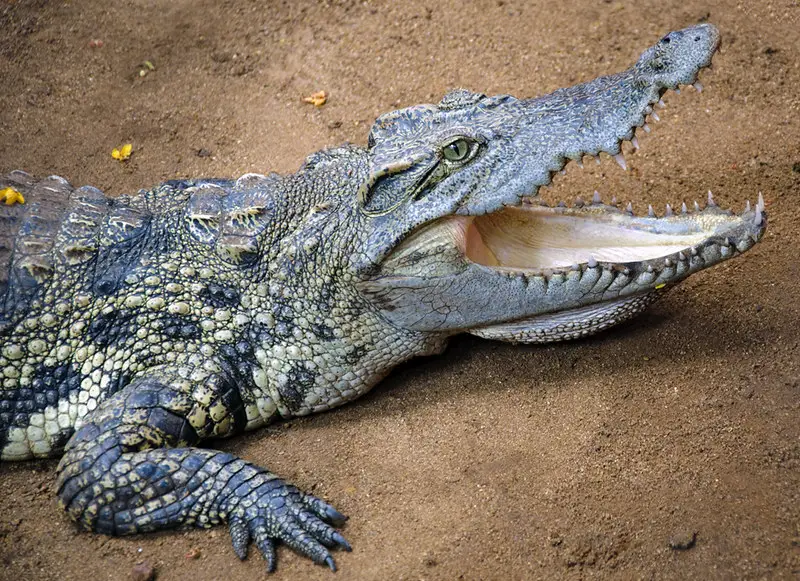
Crocodiles have been chomping their way through Earth’s waters for a jaw-dropping 200 million years. These scaly survivors were sunbathing on riverbanks when T. Rex was still learning to walk. With their armor-plated bodies and toothy grins, crocs look like they’ve stepped straight out of a prehistoric fashion show – and never bothered to update their wardrobe. The International Union for Conservation of Nature reports that there are 23 species of crocodilians alive today, found across Africa, Asia, Australia, and the Americas.
These living fossils are the ultimate adapters. They can go months without food, live in both fresh and salt water, and some species can even gallop on land. Researchers from the University of Bristol have found that crocodiles have remained largely unchanged due to a phenomenon called punctuated equilibrium. This means they’ve reached an evolutionary sweet spot where they’re efficient and versatile enough to survive without needing major changes. From the mighty Nile crocodile to the goggle-eyed gharial, these reptilian relics are still ruling the waterways with an iron claw, proving that sometimes, the old ways are the best ways.
Horseshoe Crabs

Horseshoe crabs have been cruising Earth’s oceans for an astounding 445 million years, predating even the dinosaurs. These armored sea creatures are more closely related to spiders and scorpions than to true crabs. Found along the coasts of North America and parts of Asia, horseshoe crabs play a crucial role in modern medicine. Their blue blood, containing copper-based hemocyanin, is used to test for bacterial contamination in medical equipment and vaccines. The National Oceanic and Atmospheric Administration highlights the importance of these creatures in both ecological and medical contexts.
Scientists from the University of Wisconsin-Madison discovered 445-million-year-old horseshoe crab fossils, pushing back their known history by about 100 million years. Despite their long evolutionary history, horseshoe crabs now face significant threats. Overharvesting for medical use and habitat loss have led to declining populations in recent years. The Atlantic States Marine Fisheries Commission is working on conservation efforts to protect these living fossils, including regulations on harvesting and initiatives to restore their coastal habitats. Researchers are also developing synthetic alternatives to horseshoe crab blood to reduce the pressure on wild populations.
Nautilus
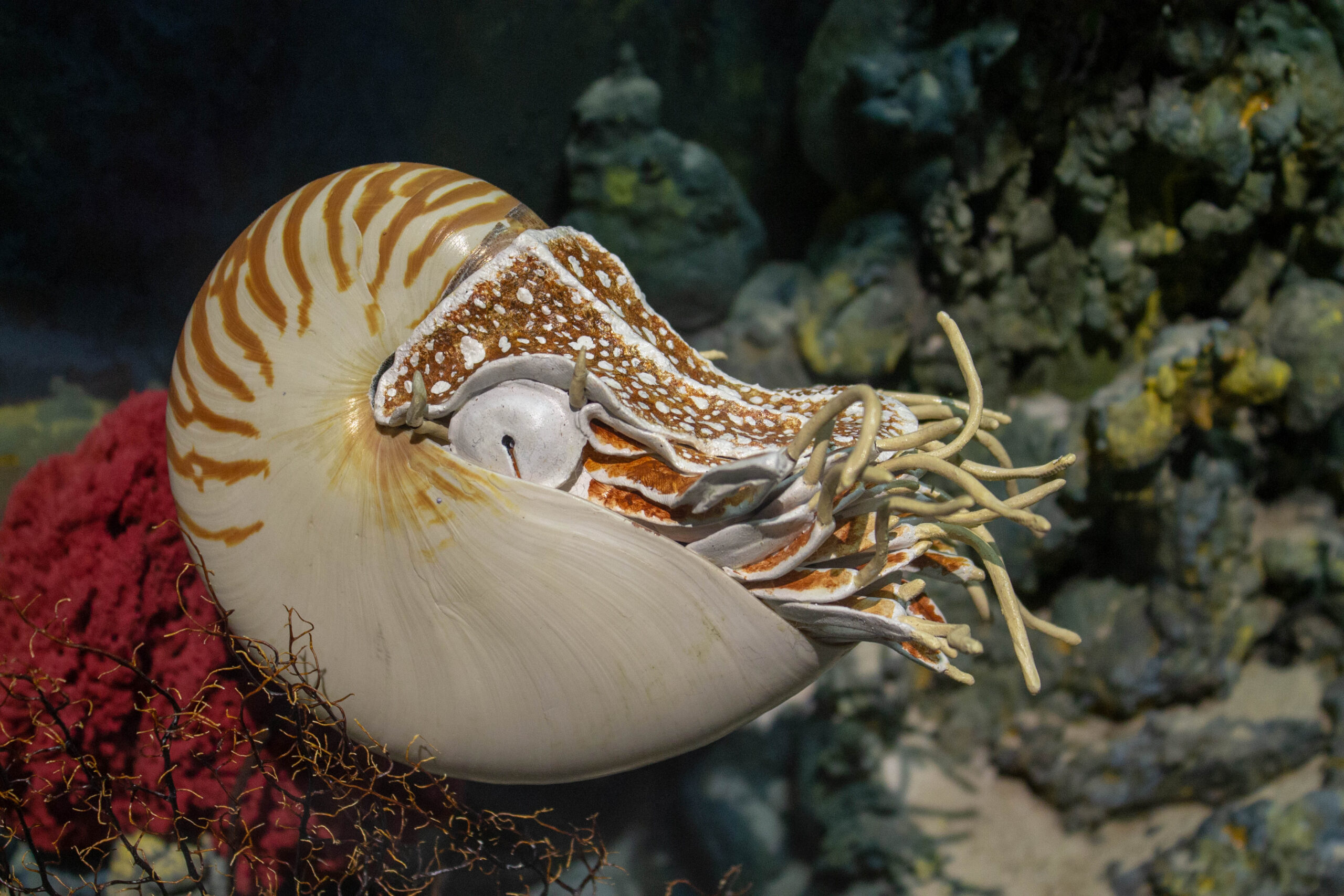
The nautilus, with its stunning spiral shell, has been gliding through Earth’s oceans for half a billion years. These cephalopod time travelers have been around since before fish had jaws, outlasting countless other species and even surviving the asteroid that wiped out the dinosaurs. Researchers from the University of Washington have discovered that nautiluses can dive to depths of up to 2,000 feet, using their chambered shells to regulate buoyancy with remarkable precision.
Despite their incredible longevity as a species, nautiluses now face their greatest threat from human activities. The Convention on International Trade in Endangered Species of Wild Fauna and Flora (CITES) has listed all species of nautilus under Appendix II, regulating their international trade. Overfishing for their beautiful shells has led to significant population declines in some areas. Scientists at the Scripps Institution of Oceanography are studying nautilus populations to better understand their ecology and develop effective conservation strategies. These living fossils continue to fascinate researchers with their unique biology and evolutionary history.
Coelacanth: The Fish That Forgot to Go Extinct

The coelacanth, once thought to have gone extinct with the dinosaurs 66 million years ago, made a spectacular reappearance in 1938 off the coast of South Africa. This deep-sea dweller has been lurking in the oceans for approximately 400 million years, earning it the moniker “living fossil.” According to a study published in Nature, coelacanths have remained virtually unchanged for millions of years, with their unique lobed fins and armor-like scales. Researchers from the Scripps Institution of Oceanography discovered that these ancient fish can live for up to 100 years and don’t reach sexual maturity until they’re at least 40 years old.
The coelacanth’s rediscovery and subsequent studies have provided invaluable insights into vertebrate evolution. A genome analysis showed that the coelacanth’s genes are evolving more slowly than those of other animals, which may explain why they’ve changed so little over millions of years. This slow rate of evolution has made coelacanths crucial for understanding the transition of vertebrates from sea to land. Despite their evolutionary significance, coelacanths face threats from accidental capture in deep-sea fishing operations. Conservation efforts are focusing on protecting their deep-sea habitats and reducing bycatch to ensure these living time capsules continue to swim in our oceans for years to come.
Tuatara

The tuatara, found only in New Zealand, is a living fossil that’s been around for a mind-blowing 240 million years. These scaly survivors were already ancient when the first mammals appeared. With their spiny crests and third eye (a light-sensitive organ on their forehead), tuataras look like they’ve stepped straight out of a fantasy novel. Research published in Nature revealed that tuataras aren’t lizards or even dinosaurs – they’re the last surviving members of an entire order of reptiles called Rhynchocephalia. This makes them a crucial link in understanding reptile evolution.
Tuataras continue to fascinate scientists with their bizarre features and remarkable longevity. Studies have shown that tuataras can live for over 100 years and continue growing throughout their lives. They also have a unique tooth structure, with teeth that are fused directly to their jawbone, unlike any other living reptile. Researchers found that tuataras have the ability to hear, despite lacking external ears, through a unique middle ear structure. Despite their resilience over millions of years, tuataras now face threats from habitat loss and introduced predators. Conservation efforts are focused on predator-free island sanctuaries and captive breeding programs to ensure these living dragons continue to thrive in their native habitat.
Platypus
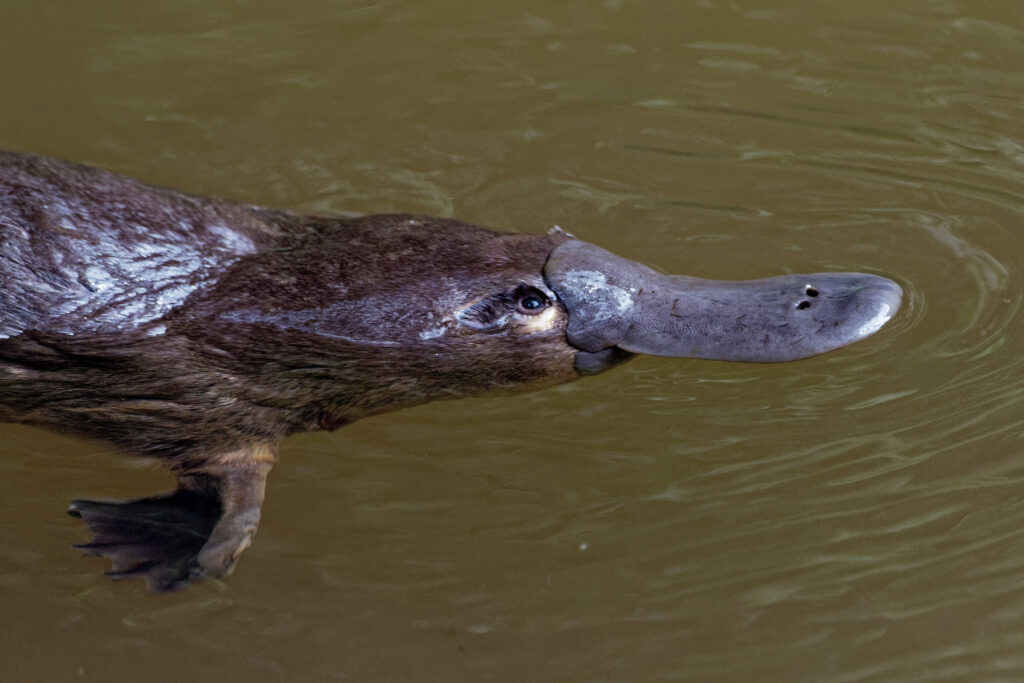
The platypus, native to Australia, has been waddling around for about 120 million years, looking like nature’s own version of a mad scientist’s experiment gone wild. With a duck-like bill, beaver-like tail, otter-like feet, and venomous spurs on their hind legs, platypuses are the ultimate evolutionary mash-up. Researchers from the University of New South Wales discovered that the platypus genome is a bizarre mix of reptilian, mammalian, and uniquely platypus genes, reflecting its position as an early offshoot of the mammalian lineage.
These bizarre creatures continue to surprise scientists with their unusual abilities. Studies have revealed that platypuses are among the few mammals that can detect electric fields, using their bills to locate prey underwater. Recent research showed that platypus fur glows blue-green under UV light, a trait whose function remains a mystery. Despite their long evolutionary history, platypuses now face threats from habitat loss, climate change, and introduced predators. Conservation efforts are focusing on protecting platypus habitats, particularly the freshwater systems they depend on.
Lungfish
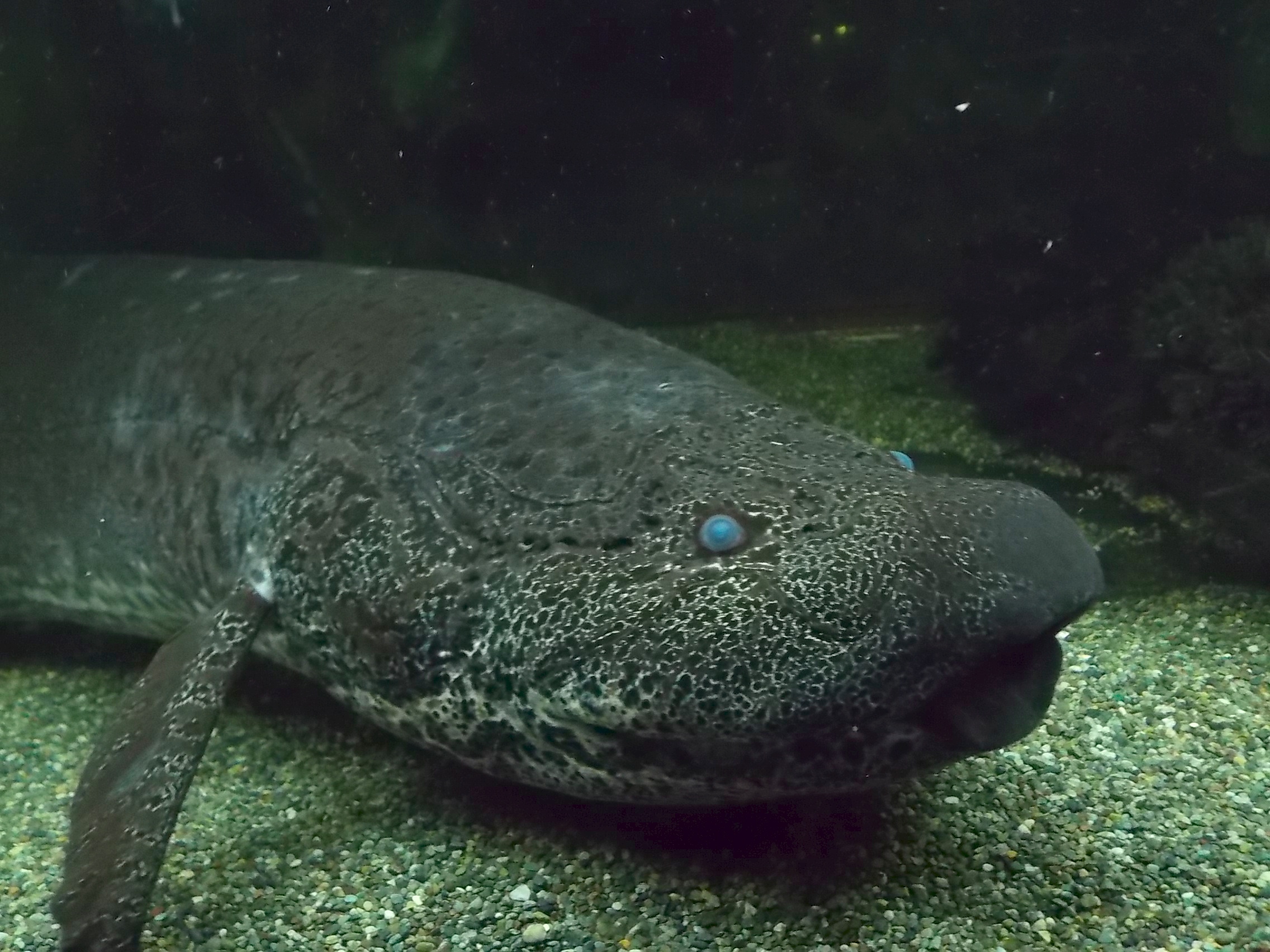
Lungfish have been lurking in our waters for a staggering 400 million years, making them one of the oldest living vertebrate lineages on Earth. These scaly survivors were around long before dinosaurs roamed the land, and they’ve changed remarkably little since then. Scientists at the University of Queensland found that lungfish possess both gills and a primitive lung, allowing them to breathe air and survive in oxygen-poor water or even on land for short periods.
These living fossils continue to amaze researchers with their remarkable abilities. Studies have shown that some species of lungfish can survive drought by burrowing into mud and entering a state of suspended animation called aestivation. During this time, they secrete a mucus cocoon around themselves and can remain dormant for years until water returns. Recent research revealed that lungfish have a surprisingly complex brain structure, more similar to amphibians than to other fish, suggesting they may be more closely related to land vertebrates than previously thought. Despite their long evolutionary success, lungfish now face threats from habitat destruction and overfishing. Conservation efforts are focusing on protecting their freshwater habitats and regulating fishing practices.
Sturgeon

Sturgeons have been swimming in Earth’s waters for over 200 million years, earning them the title of living fossils. These ancient fish are known for their distinctive armor-like scales called scutes and their shark-like tails. Researchers from the University of Michigan discovered that sturgeons have remained largely unchanged for millions of years, retaining many primitive features that have been lost in more modern fish species.
Despite their long evolutionary history, sturgeons are now among the most endangered fish on the planet. Overfishing for their eggs (caviar) and habitat destruction have decimated many sturgeon populations. Some species, like the beluga sturgeon, can live for over 100 years and grow to enormous sizes, making them particularly vulnerable to overfishing. Conservation efforts are underway to protect these ancient giants, including captive breeding programs and habitat restoration projects. Scientists are also studying sturgeon genetics to better understand their evolutionary history and develop more effective conservation strategies.
Lamprey

Lampreys have been swimming in our waters for a jaw-dropping 360 million years, making them one of the oldest vertebrate groups still alive today. These eel-like creatures were already ancient when the first reptiles crawled onto land. With their circular, tooth-lined mouths and lack of jaws, lampreys look like they’ve swum straight out of a prehistoric nightmare. Researchers from the University of Cambridge found that lampreys are crucial to understanding vertebrate evolution, as they represent a transitional form between invertebrates and jawed vertebrates.
Despite their “primitive” appearance, lampreys have some remarkable abilities that continue to fascinate scientists. Studies have shown that lampreys can regenerate their spinal cords after injury, a feat that most other vertebrates, including humans, cannot achieve. This regenerative ability has made lampreys important subjects in spinal cord injury research. Recent discoveries revealed that lampreys have a sophisticated immune system that’s surprisingly similar to ours, despite diverging from our evolutionary lineage over 500 million years ago. While some lamprey species are considered pests due to their parasitic lifestyle, others are threatened by habitat loss and pollution. Conservation efforts are focusing on restoring spawning habitats and removing barriers to their migration.
Horseshoe Shrimp
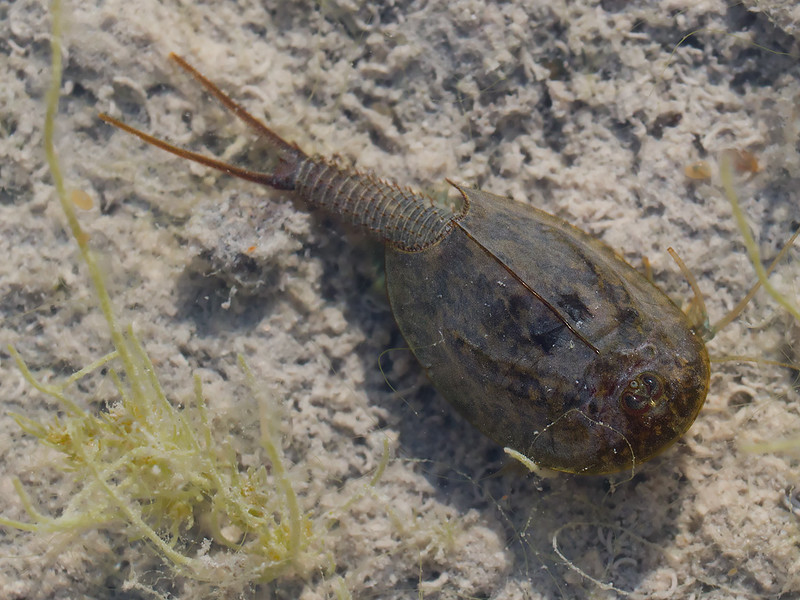
Horseshoe shrimp, also known as tadpole shrimp or triops, have been throwing pool parties in temporary waters for over 200 million years. These tiny crustaceans were already ancient when the first mammals appeared. With their shield-like shells and multiple pairs of legs, horseshoe shrimp look like they’ve time-traveled straight from the Triassic period. Researchers from the University of Glasgow found that these living fossils have changed so little over millions of years that they’re often referred to as “living fossils.”
These prehistoric pool partiers have some truly extraordinary survival strategies. Studies have revealed that horseshoe shrimp eggs can survive for decades in dry soil, waiting for the right conditions to hatch. When rain finally comes, they spring to life, growing rapidly and reproducing before their temporary pools dry up again. Recent research discovered that some species of horseshoe shrimp can change their sex depending on environmental conditions, a strategy that ensures reproductive success in unpredictable environments. Despite their ability to withstand extreme conditions, horseshoe shrimp face threats from habitat loss and climate change. Conservation efforts are focusing on protecting temporary wetlands and studying the impact of changing rainfall patterns on these ancient survivors.
Velvet Worms

Velvet worms have been oozing their way through damp forests for a mind-blowing 500 million years. These velvety crawlers were already ancient when the first fish appeared. With their soft, segmented bodies and stubby legs, velvet worms look like they’ve crawled straight out of a prehistoric cartoon. Researchers from the University of Vienna discovered that velvet worms belong to a unique phylum called Onychophora, which sits between arthropods and annelids on the evolutionary tree.
These bizarre creatures have some truly unique features that continue to amaze scientists. Studies have shown that velvet worms hunt by shooting streams of quick-hardening slime from glands on their heads, a hunting strategy unlike any other in the animal kingdom. Recent research found that some species of velvet worms live in social groups and exhibit complex behaviors, including forming hunting parties and sharing food. Despite surviving multiple mass extinctions, velvet worms now face threats from habitat destruction and climate change. Conservation efforts are focusing on protecting the moist forest habitats these ancient creatures call home, ensuring that these living time capsules continue to slither through our forests for years to come.
Goblin Shark
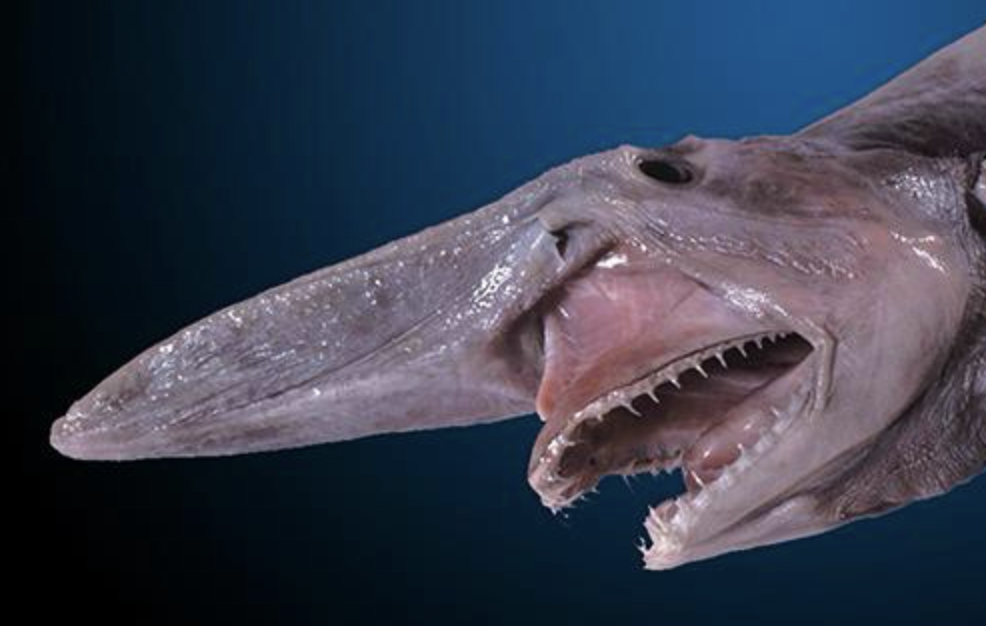
Goblin sharks have been lurking in the deep seas for about 125 million years, earning them the title of living fossils. These bizarre-looking creatures, with their distinctive elongated snouts and protrusible jaws, seem like they’ve swum straight out of a prehistoric nightmare. Researchers from the Florida Museum of Natural History found that goblin sharks have remained largely unchanged for millions of years, retaining many primitive features that have been lost in more modern shark species.
Despite their long evolutionary history, goblin sharks remain one of the most enigmatic creatures in the ocean. Studies have shown that their unusual jaws can extend almost the full length of their snouts when catching prey, a unique adaptation among sharks. Recent research revealed that goblin sharks may be more widespread than previously thought, inhabiting deep waters around the world. However, due to their deep-sea habitat, they are rarely encountered by humans and much about their biology and behavior remains a mystery. Conservation efforts for goblin sharks are challenging due to their elusive nature, but protecting deep-sea ecosystems is crucial for ensuring the survival of these living fossils.
Martialis Heureka

Martialis heureka, also known as the Ant from Mars, represents a lineage of ants that diverged from all other ants about 120 million years ago. This pale, eyeless ant was discovered in the Amazon rainforest in 2003, living underground and likely never seeing the light of day. Researchers from the University of Texas at Austin found that this species is so unique it was placed in its own subfamily, Martialinae.
The discovery of Martialis heureka has provided valuable insights into ant evolution and adaptation to subterranean life. Studies have shown that these ants have completely lost their eyes, developing elongated mandibles instead to navigate and hunt in their dark underground world. Recent research suggests that Martialis heureka may represent one of the earliest branches of the ant family tree, offering a glimpse into what ancient ants might have looked like. While little is known about the conservation status of this species due to its recent discovery and cryptic lifestyle, protecting the Amazonian rainforest and its complex underground ecosystems is crucial for preserving this living fossil and other unique species that may still be waiting to be discovered.


